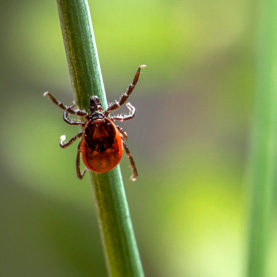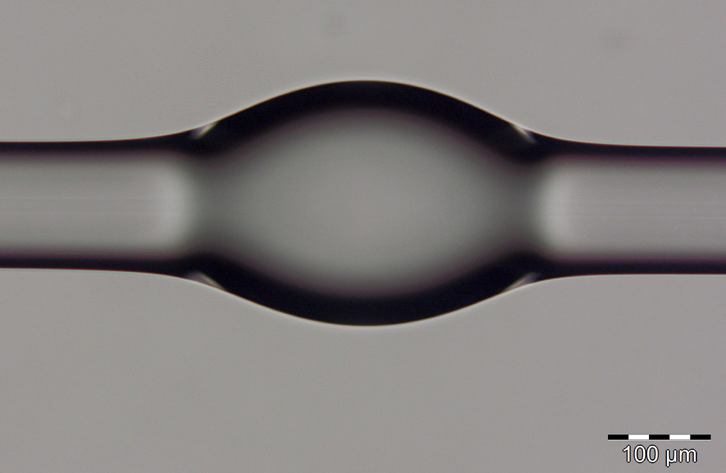Early detection of Lyme disease thanks to optical microresonators
Lyme disease (also known as Lyme borreliosis) is the most common tickborne infection in Germany. Only if the infection is diagnosed and treated in time, the patient will be spared additional complications. However, current diagnostic methods do not reliably detect Lyme disease at an early stage.


In the transnational PoC-BoSens project coordinated by Fraunhofer Institute for Reliability and Microintegration IZM, a portable, highly sensitive diagnostic system based on optical microresonators is being developed that can early detect Lyme disease infection in a short time. The sensor works by simultaneously detecting several Lyme-related biomarkers that occur in the human body in the case of infection.
As a world first, the research project combines a micro-fluidic system with bottle microresonators. These sensing structures are highly sensitive, easy to integrate, and have an ultra-compact size. Project coordinator Dr. Alethea Vanessa Zamora Gómez of the Fraunhofer IZM says, “The technological backbone of the project is our use of bottle microresonators as biosensors. They are an excellent choice for a multi-channel detection of our target biomarkers.” The project brings together an international consortium of researchers and industrial partners with competences in photonics, microfluidics, biochemistry, electronics, and biomedicine. The German contingent consists of partners from Fraunhofer IZM, Diarect AG, Scienion AG, MDX Devices GmbH, and IfU Diagnostics Systems GmbH.
The German Federal Ministry of Education and Research (BMBF) is funding PoC-Bo-Sens within the framework of the transnational funding initiative Photonics Based Sensing ERA-NET Cofund (PhotonicSensing). The project runs from April 2018 to March 2021. The project volume is approximately 2.4 million euros.
Last modified: